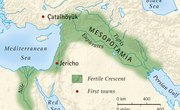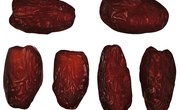At one time, catapults were as simple as slingshots. Catapult history began in ancient Greece. Over time, catapults developed into complex siege weapons. Catapult design relies on complicated mathematics, so the power and range of catapults improved throughout the centuries as humanity’s understanding of math and geometry grew by leaps and bounds.
The types of catapults include ballistas, the iconic mangonel and the trebuchet, all of which continue to be used today but in very different contexts than they were before. Some catapults are used in education, particularly in STEM fields. Others find themselves as the focus of annual competitions.
What Is a Catapult?
A catapult is a device used to fling objects across vast distances or over walls with only physical force. Most catapults rely on a buildup of potential energy in a spring, winch and cable or similar device. When a catapult operator engages the device’s mechanism, the potential energy transforms into kinetic energy to launch a projectile from the catapult’s bucket.
Traditional Catapult Design
When you think of a catapult, the siege machine you likely picture in your mind’s eye is the mangonel. Mangonel catapult design relies on complex physics and simple machines, including pulleys, wedges, wheels and axles, levers and screws. Some historical catapults are as large as cars and trucks are today. They have wheels so that they can be moved. The catapult’s mechanism itself is built into an A-shaped frame on the wheeled bed. The catapult’s arm attaches to a fulcrum on the bed, and ropes that attach to both the arm and the bucket (which carries the payload) tighten to lock the catapult into place before it can launch.
What Is the Catapult’s History?
Catapult history originates in ancient Greece, with the earliest recorded mentions in historical texts coming from the 1st century B.C. historian Diodoros, who wrote about their use in a famous siege in 397 B.C.
The earliest catapults evolved from devices much like crossbows. Although early catapults were used to launch arrows, ancient engineers soon developed the technology to launch larger objects, such as stones.
Since catapults were feats of early engineering, many rulers bragged about the prowess and accuracy of their siege machines. For a kingdom, excellent catapults not only represented the military might; they also represented the brilliance of the ruler’s learned subjects, like mathematicians.
Even though we associate catapults with medieval times, their use didn’t stop with the Renaissance. Catapults were even used in World War I to help soldiers launch projectiles over the trenches.
Believe it or not, catapults were even used on aircraft carriers in World War II, and their use continues today. To help fighter jets leave the runway on an aircraft carrier, which is usually much shorter than any runway on land, engineers used steam-powered catapults to help launch small planes into the air before the short runway ran out beneath them. Without these catapults, the aircraft would have ended up in water.
A modern update of those early aircraft carrier catapults lives on. This updated version uses electromagnetic technology to help get airplanes airborne. Electromagnetic technology is more efficient than steam power. These catapults can also be used on bigger planes.
How Were Catapults Used in Medieval Times?
In medieval times, catapults were used as siege weapons and designed to launch objects over castle walls. Some of these objects were what you might think of as usual military weapons. They were things like stones, arrows and other projectiles. But medieval bombardiers were more creative than that. Some used their catapults to launch flaming objects over the castle crenellations in hopes of setting the castle on fire.
Other medieval catapult operators were even more diabolical. They used their siege machines to fling diseased corpses or other forms of pestilence over castle walls. In siege warfare, this was particularly devastating because the group defending the castle usually locked themselves inside its walls. The faction outside the walls wanted to get inside to take control. But if everyone inside the castle died, there would be no one to stop you from getting inside.
What Are the Different Types of Catapults?
In addition to the mangonel, the two other main types of catapults are the ballista and the trebuchet.
The typical ballista looks like a crossbow on wheels. Its function is very similar as well, but in general, a ballista is larger than a crossbow. The ballista has two arms connected by a piece of rope, which is then winched taught to create potential energy to launch a projectile, usually an arrow or something similar. This type of catapult originated in ancient Greece.
The other main type of catapult is a trebuchet. Trebuchets were designed to fling objects farther than any other kind of catapult. The traditional trebuchet has a long arm that is attached to a fulcrum. It also has a short arm to act as counterbalance. A sling, much like that of a slingshot, is pulled back on the long arm. When the counterbalance goes down, the trebuchet will fling its payload up into the air.
What Are Catapults Used for Today?
Although catapults were weapons of war in medieval times and earlier, today they fall under the domain of hobbyists and war reenactors. They are also widely used in education. Sometimes they make an appearance in the corporate world to foster team building skills.
Teachers use catapult making projects to demonstrate the physics of gravity, potential energy and kinetic energy. Even small projects that use things like marshmallows can give students a glimpse of how catapults work.
Some universities throw catapult competitions. At these competitions, students compete to create the most effective catapult using skills they have learned from physics, math and engineering. The team that launches their projectile the farthest wins.
Catapult projects can also be used to teach important concepts in algebra and geometry. Projectiles launched from catapults demonstrate the concept of a parabola, or a geometric arc that is the same on both sides. Students can also practice calculating the gravitational force a projectile undergoes by using quadratic equations.
Other projects will test students' problem-solving skills. Building a catapult to launch an object is a complex thinking task that will ask students to work in groups, doing different things to solve the same problem. Such an assignment may fit many schools’ project-based learning requirements.
Catapult building is also an effective corporate team building exercise if done on a smaller scale. Teams are given materials that they can use to make a catapult. Much like with high school and university projects, this kind of project encourages people to work together for a common goal.
Other enthusiasts throw competitions outside of schools. Some towns and clubs throw annual “pumpkin chucking” contests to see which team can launch a pumpkin the farthest. In many places, such competitions have become a fall tradition. It’s fun to go outside and enjoy the fall leaves while you watch gourds fly through the air. Such activities aren’t just excuses for adults to play with medieval technology. They also present a great opportunity for children and teens to learn about history, mathematics, physics and engineering.
Related Articles
References
Writer Bio
Rebecca Renner is a teacher and college professor from Florida. She loves teaching about literature, and she writes about books for Book Riot, Real Simple, Electric Literature and more.









